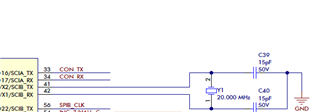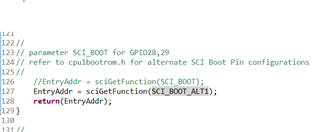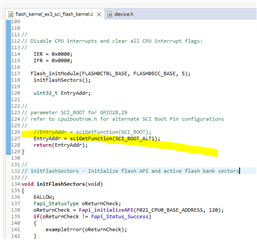Other Parts Discussed in Thread: C2000WARE, UNIFLASH
Hello,
We are not able to program the F280039CSPM via SCI boot mode and are trying to troubleshoot the issue.
serial_flash_programmer.exe -d f28003x -k flash_kernel_ex3_sci_flash_kernel.txt -a gpio_ex2_toggle.txt -p COM7 -b 9600 -v
Copyright (c) 2013 Texas Instruments Incorporated. All rights reserved.
getting comm state
building comm DCB
adjusting port settings
calling f021_DownloadKernel CPU1 Kernel
Downloading flash_kernel_ex3_sci_flash_kernel.txt to device...
Attempting autobaud to load the kernel...












